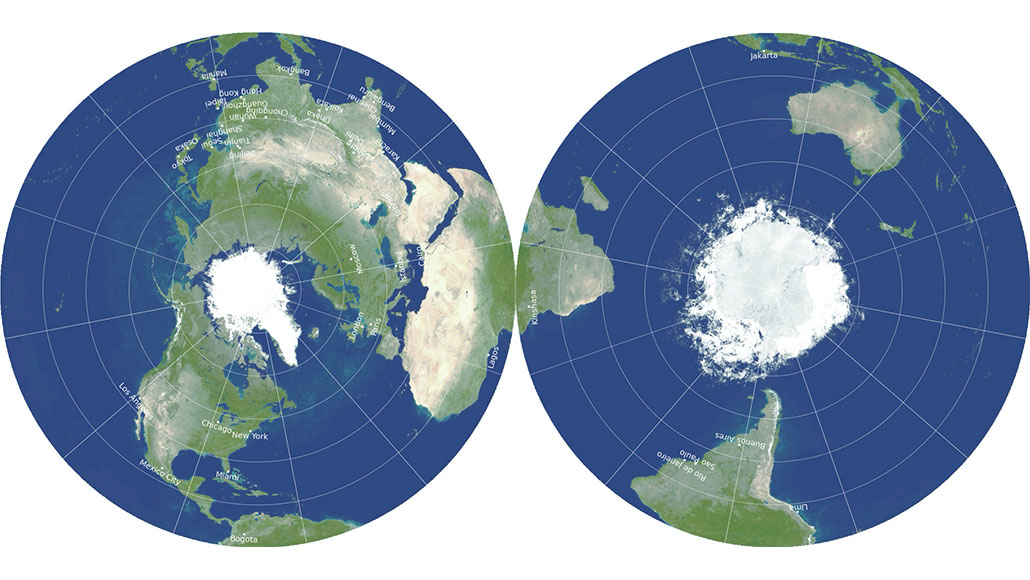Questions for “Earth as you’ve never seen it before”

Maps always contain distortions, and the larger the area they display, the more obvious those distortions become. But a new technique rendered the round maps here with the fewest distortions ever, its developers say. Distances can be measured between any two points, sometimes by crossing to the other side.
J.R. Gott, R. Vanderbei and D. Goldberg